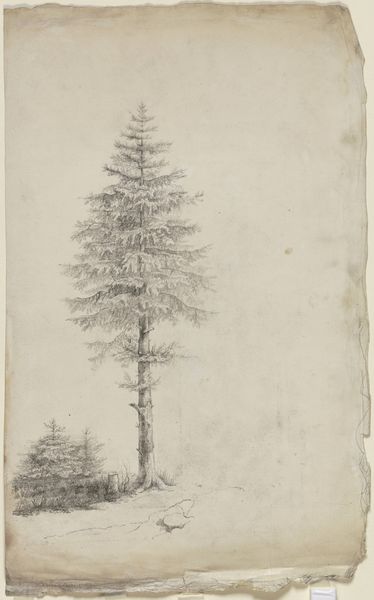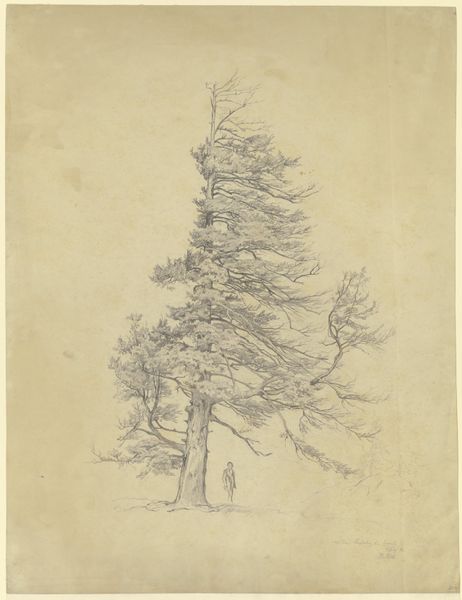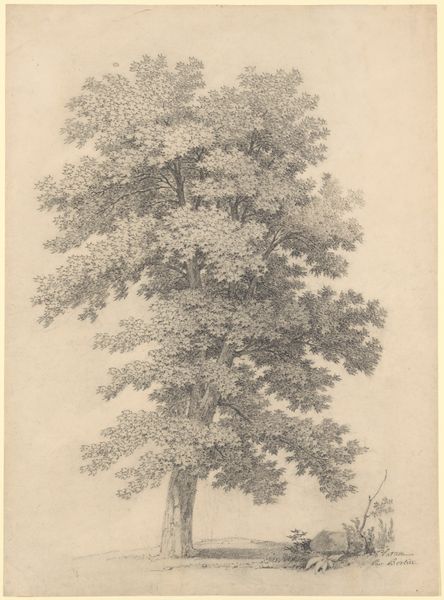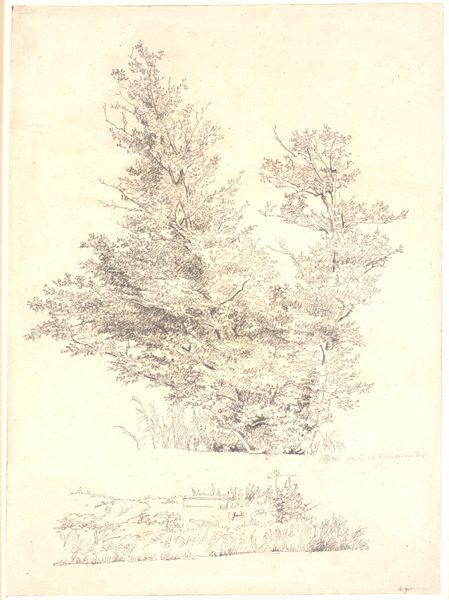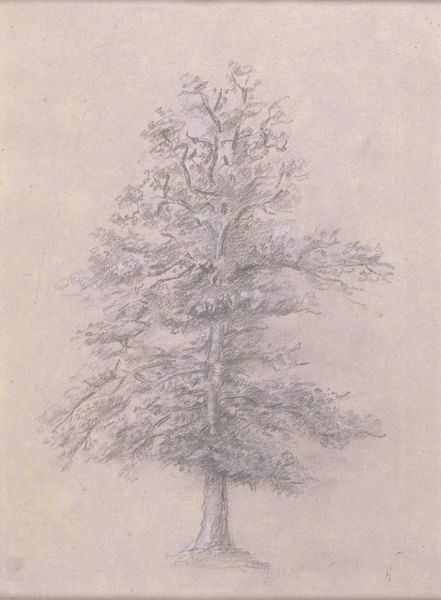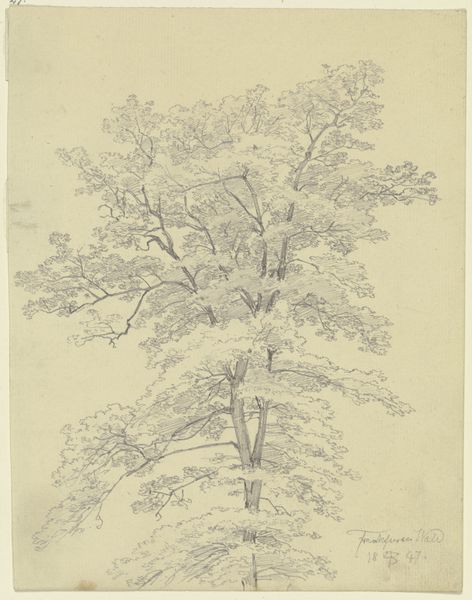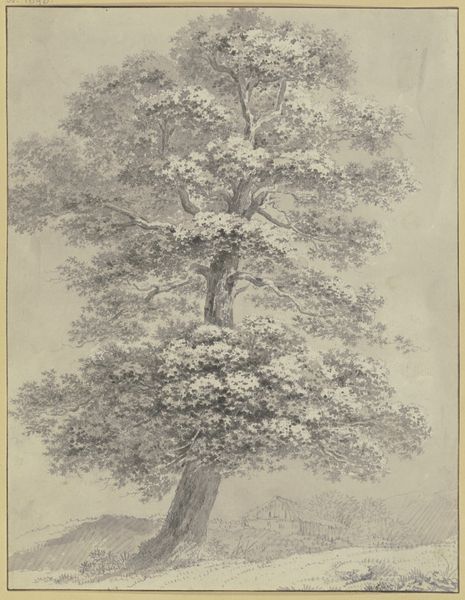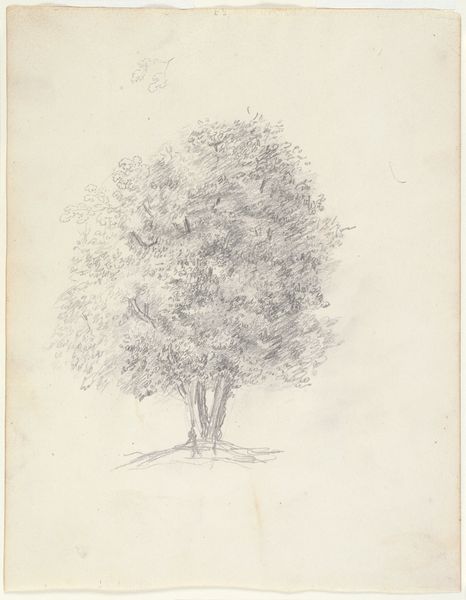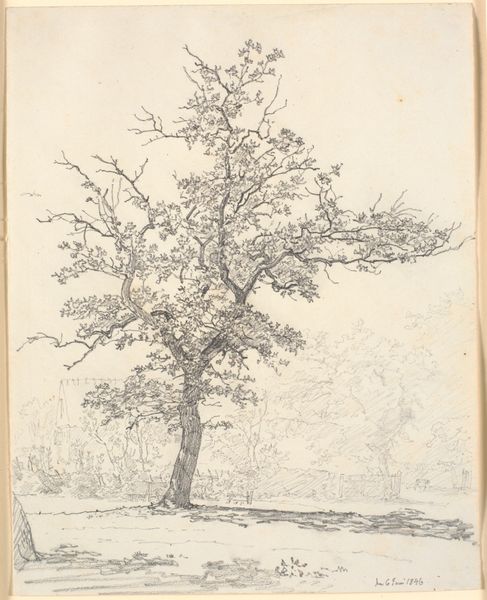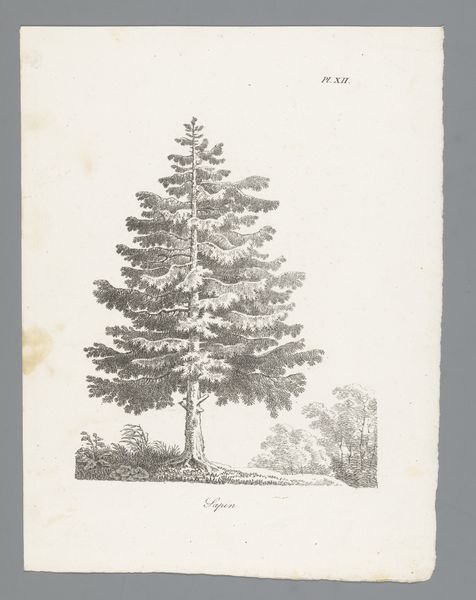
drawing, pencil, chalk, graphite
#
drawing
#
pencil sketch
#
landscape
#
pencil
#
chalk
#
graphite
#
realism
Copyright: Public Domain
Curator: "Fir Tree," attributed to Louis Eysen, resides here at the Städel Museum, realized in pencil, chalk and graphite. What strikes you upon initial viewing? Editor: Well, I think it looks brooding! There's such a dense accumulation of graphite; it almost feels like a storm is brewing inside that tree. It feels heavier than air. Curator: Yes, the tonality indeed creates a significant impact. Eysen masterfully uses hatching and cross-hatching to suggest depth and volume. The contrast between light and shadow models form to great effect, achieving verisimilitude, while still using an interpretive mode. Editor: It is almost architectural, isn’t it? Each branch seems painstakingly rendered. The realism is amazing but what moves me most are those little rebellious needles that seem to dance beyond any attempt at photorealism! Curator: I appreciate that observation, precisely what grounds this in expressive potential of drawing rather than exact mimicry. What Eysen offers us transcends the mere imitation of nature. It invites, I think, to ponder the complex relationships of observation, material and artistry. Editor: Agreed. And something about the simplicity of it— just the tree, stark against the blank page. I keep thinking about how, stripped down like this, you're left with the essence, a silent testament to the quiet dignity of the natural world. A beautiful meditation using so simple a material as pencil. Curator: Your reflection makes clear the emotive potency. Through formalism we may better observe, while our understanding may rely in the individual impression that makes meaning unique to each viewer. Editor: Right! It’s a dance of line and feeling. You see what you see and feel what the piece wants you to feel, no? It may just be a tree, but standing here, I experience a very complex response.
Comments
No comments
Be the first to comment and join the conversation on the ultimate creative platform.
